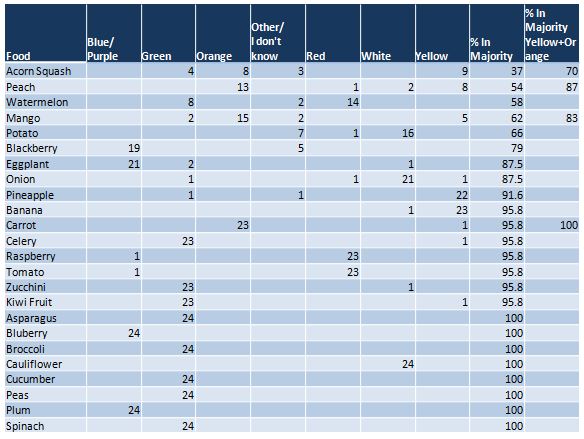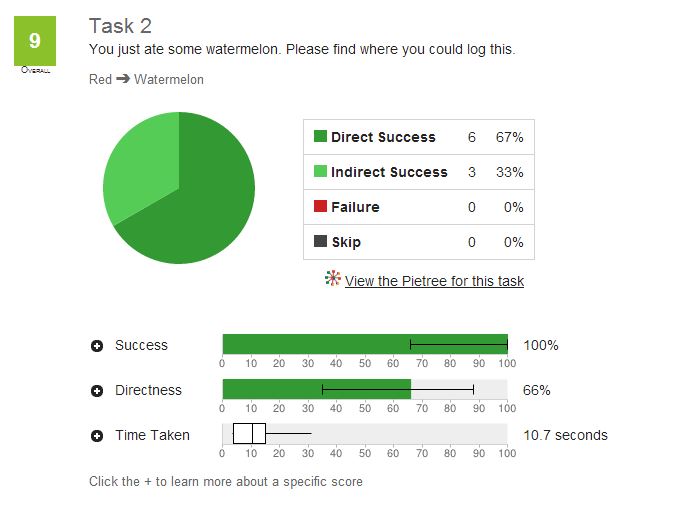Rainbow Munch is a mobile application I have been developing which aims to help users track their consumption of fruits and vegetables. One of the necessary development steps was understanding how people saw the fruits and vegetables they ate.
Problem: My initial idea (and the source for the app’s working name) was to sort the foods by color. The ‘rainbow’ metaphor could provide an easy way to help users eat a variety of fruits and vegetables, and allow for creative ways of displaying their progress and goals. If the app was going to operate around food colors, it made sense to have users enter their food by color. But, what colors did people (other than me) think foods were, and did they agree? I couldn’t proceed with the project until I had research about the colors of foods.
Process: I used Optimal Sort to run a card sorting test where I asked users to drag cards with the names of common fruits and vegetables into boxes labeled with colors. I downloaded the data and used Excel to determine the most popular answers. The table below shows my results:
I found that most disagreement was between the categories of yellow and orange, and that if I were to combine these into a single choice, the majority of users would be in agreement.
Even after combining the yellow and orange categories, not all subjects agreed on where a food should go. It seemed likely that users in the minority would know where to look second, if a food didn’t appear under their first choice. To test this, I used Treejack to have subjects try to find foods in a structure.
I tested users on three foods: Peach, Watermelon and Mango. I was particularly interested in how users found Watermelon, because in my card sort it was the food with the lowest agreement. Most users thought watermelon was red, but almost 30% thought it was green. The results of the Treejack test confirm that users who initially selected ‘green’ were able to successfully navigate back and find watermelon under ‘red’.
Outcome: Based on my tests, I determined that color was a valid way of sorting the fruits and vegetables in the Rainbow Munch app. As long as I combined the ‘yellow’ and ‘orange’ categories most users should be able to figure out which color a particular fruit or vegetable is listed under.


